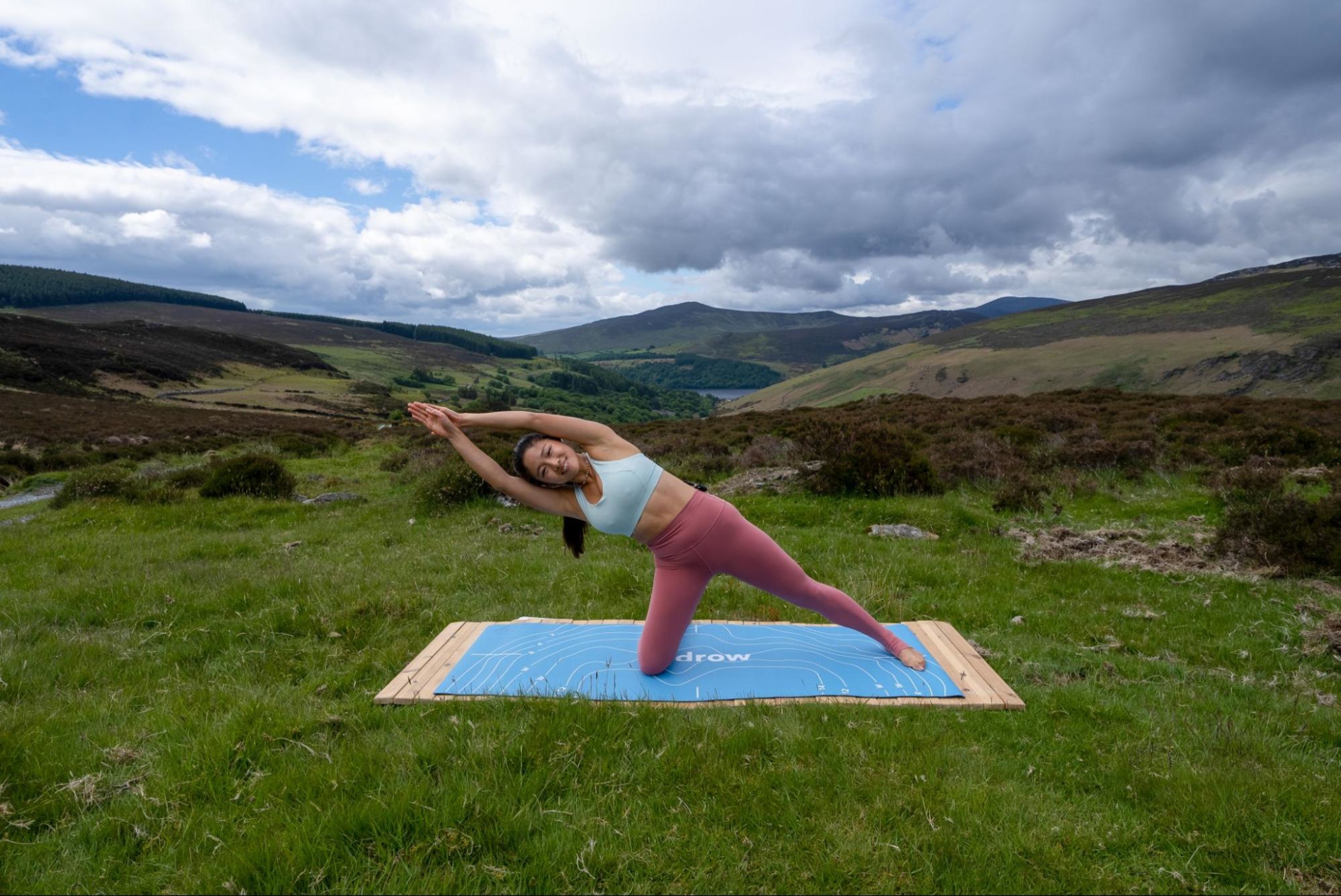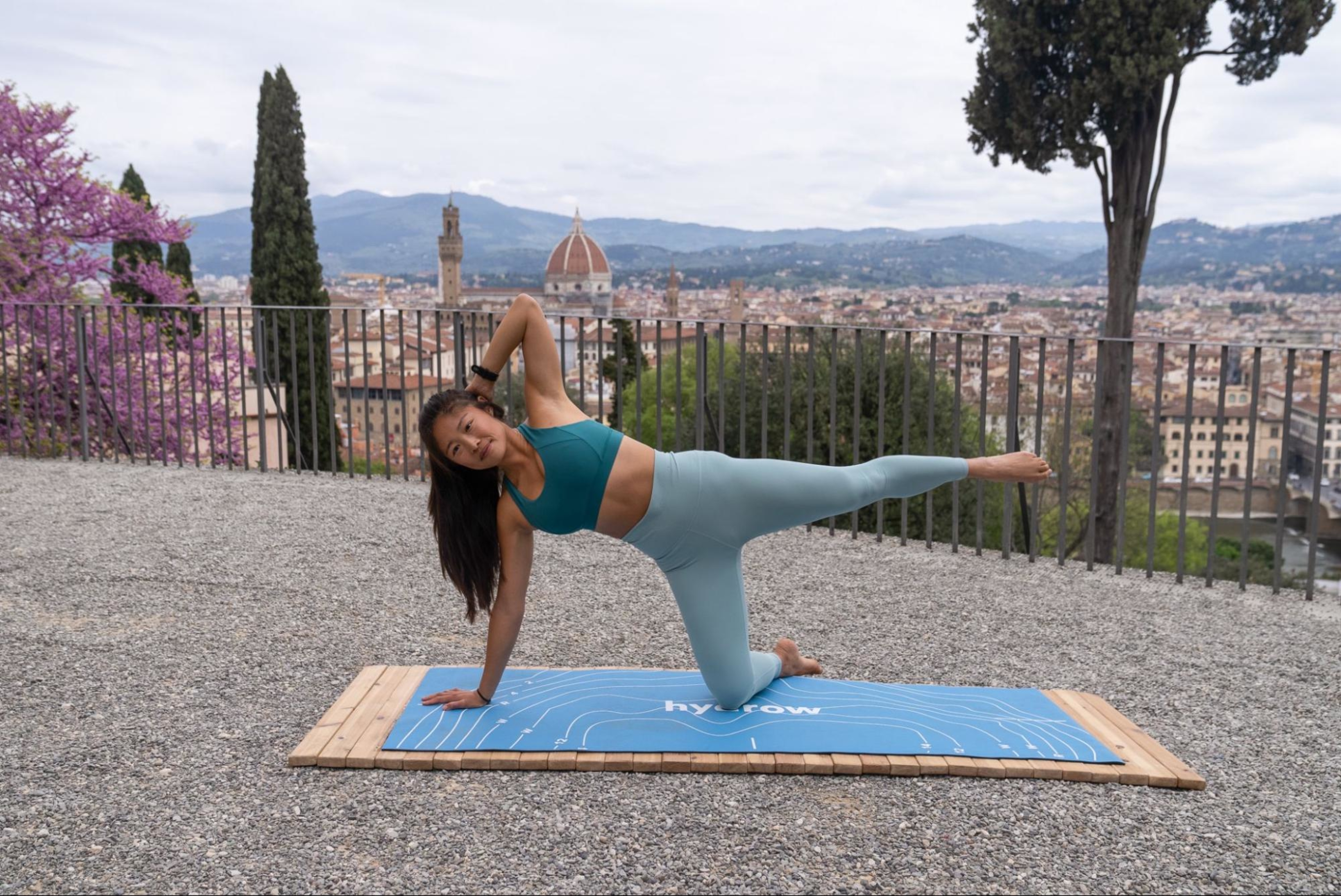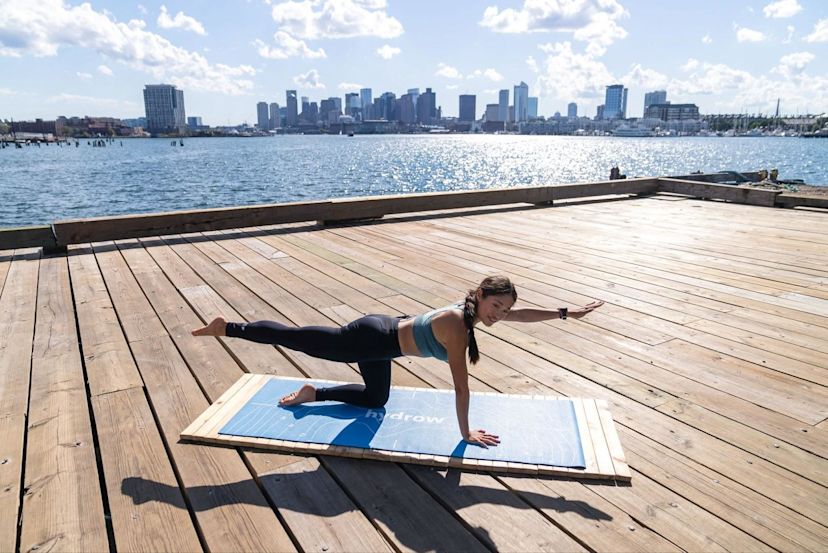Is Pilates a Good Workout?
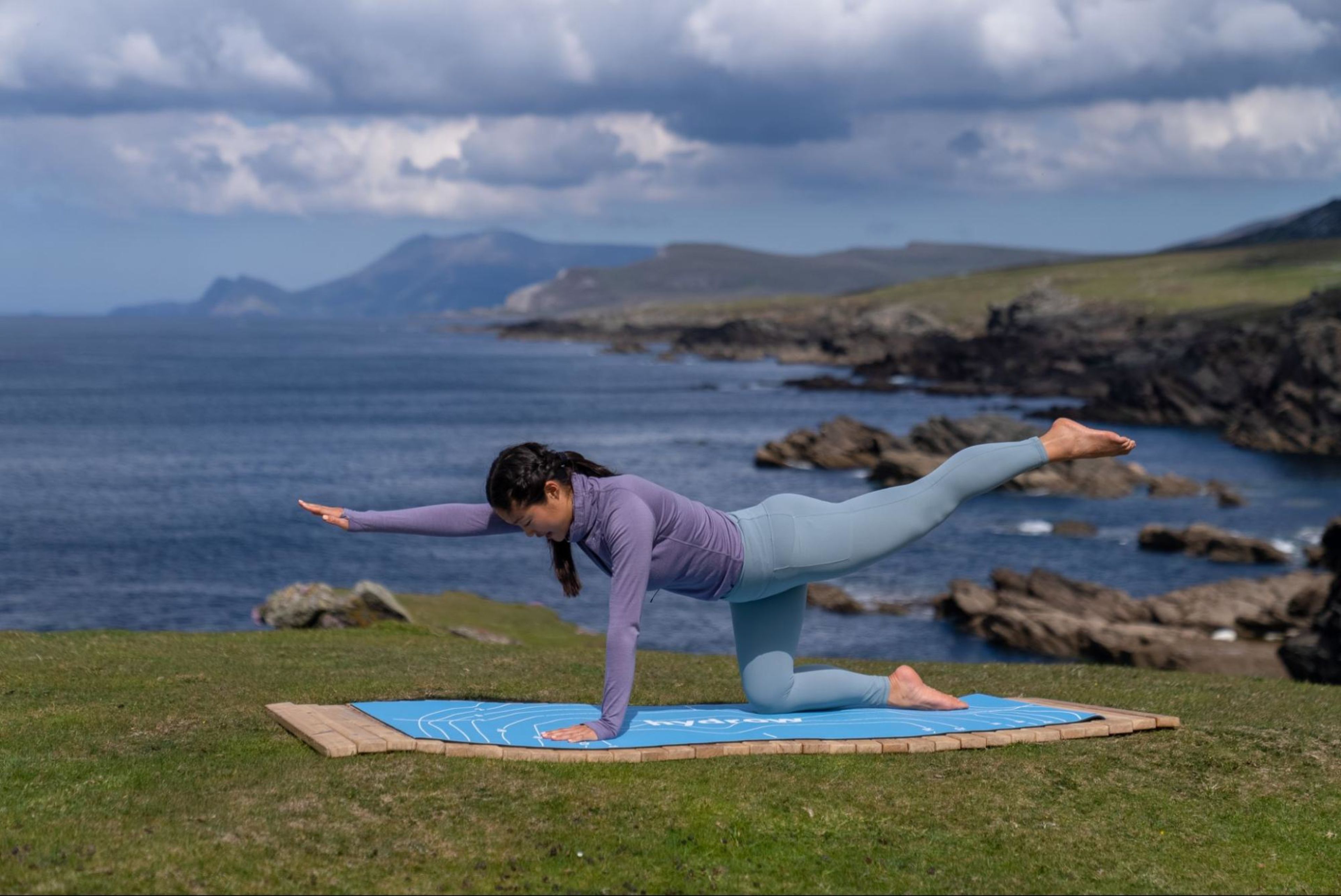
If you’re interested in incorporating Pilates into your fitness routine, you’re definitely not alone: Pilates has been steadily gaining popularity since the late 1990s and was even named the most popular workout on ClassPass in 2023! Despite this, there are still misconceptions that keep people from trying it. Some assume Pilates is too challenging, while others think it’s too easy. Many also believe it’s too expensive to get started.
As a result, many haven’t yet had the chance to experience the benefits of Pilates. Let’s explore why you should give it a try!
So, is Pilates a good workout?
Yes! Pilates is a great workout because it works your entire body, strengthens your core, promotes flexibility, and builds strength, all while also fostering mindfulness and better body awareness. Plus, mat Pilates can be done anywhere if you don’t have access to Pilates apparatus or a studio.
Why is Pilates such a good workout?
There are many benefits and good reasons to incorporate Pilates into your workout routine, as Pilates:
Helps to build your core strength
Improves your flexibility
Balances muscle developmentIncreases your body awareness
Improves your posture and alignment
Prevents injuries and assists in injury rehab
Improves your mind-body connection
Improves fitness for people of all levels
Improves overall well-being
Improves sleep
Boosts your immunity
Let’s dig in deeper below:
Pilates helps to build your core strength
Your core comprises all the muscles surrounding the center of your body and is a critical connection between your upper and lower body. So, a strong core is vital for supporting your body and daily activities. Pilates focuses on breathwork and focused movement that allows your core muscles to get stronger and more stable.
Pilates improves your flexibility
Pilates involves smooth and controlled movements, which can help maintain the functionality of muscles and improve the mobility of your joints. Some studies indicate Pilates may even be more effective at improving flexibility than static stretching!
Pilates balances muscle development and endurance
The focused, precise movements that are the signature point of Pilates build muscular strength and muscular endurance at the same time. Combining these two elements of fitness helps you develop a balanced and fit body.
Pilates movements engage multiple muscle groups to build strength, and the repetitive nature of each exercise helps build strength endurance, which is important for allowing you to participate in activities for extended periods and reducing how quickly you feel fatigued.

Explore Hydrow’s library of 5,000+ rowing, circuit training, yoga, Pilates, and mobility workouts.
Pilates increases your body awareness
Pilates gives you the opportunity to focus on your breath and move mindfully, allowing you to connect with your body and enhance proprioception and body awareness. This can help you be more aware of your balance and better support mobility, which will reduce your potential for injury.
Pilates improves your posture and alignment
Increasing your body awareness can also have a positive effect on your posture and spinal alignment. Strengthening your core and focusing on proper form and breathing all contribute to good posture. Proper posture can also lead to fewer headaches and backaches, as well as other joint pains and poor movement patterns.
Pilates prevents injuries and assists in injury rehab
Many of the other benefits of Pilates contribute to the benefit of injury prevention. Having a strong core, good posture, and good body awareness can all help prevent injuries, such as falls. And if you do happen to have an injury, Pilates exercises can help strengthen weaknesses caused by the injury, depending on what it is.
Pilates improves your mind-body connection
Having a strong mind-body connection allows you to be very aware of your body in space and how your body relates to your immediate environment. The focused attention that a Pilates practice requires enhances this skill.
Mind-body connection is important for fluid and coordinated movement, balance, stability, and avoiding injuries, along with stress relief and mental focus. Developing this skill is like developing a muscle—you need to work at it!
Pilates is good for all fitness levels
Because Pilates exercise is low-impact and easily adaptable, it’s good for all fitness levels, body types, and ages. You can perform Pilates exercises using bodyweight or adjustable machines, whether you’re a beginner or advanced exerciser. Plus, its focus on core strength and body awareness can benefit everyone.
Pilates improves overall well-being
Focusing on your breath during a Pilates workout can help lower cortisol levels, thus lowering stress levels. And exercise releases endorphins, which can boost your mood. Additionally, experiencing regular progress in a fitness routine—such as getting stronger and more functional—helps you build a positive mindset and gives you an overall sense of well-being and personal satisfaction.

Did you know?
Over 90% of Hydrow members are still active one year later.
Pilates improves sleep
Moderate exercise in general improves the quality of your sleep, how quickly you fall asleep, and your ability to stay asleep. Studies have shown that Pilates has a positive effect on sleep quality, particularly in individuals younger than 40 years old.
Pilates boosts your immunity
Pilates boosts circulation of blood and lymph, which can support a healthy immune system. Having a strong and healthy body helps fend off common diseases and ailments and also helps you recover faster if you do get sick. Pilates also helps with stress reduction, which can reduce your chances of getting sick.
Tips to get more out of your Pilates workouts
Stay as focused as possible: It’s important to focus on your breath, the exercise and the muscles being worked rather than mindlessly cranking out repetitions.
Maintain tension in your muscles, especially your core: If you’re working on equipment, work against the tension rather than letting the springs do the work for you.
Start with the basics: If you’ve never done Pilates before, start slowly and master the basics first. As you become more mindful and gain strength, you can gradually progress to more advanced exercises.
Maintain alignment: Keeping your body in proper alignment and using good form will allow you to get the most out of your practice.
Get support: Consider getting guidance from an instructor to ensure you’re doing everything correctly. This will help you maximize benefits and avoid injuries.
Be consistent with your practice: Pilates exercises build on themselves, so it’s important to practice regularly and consistently. Consistency with any exercise program is the key to progress and results.
Pilates is a type of workout that anyone, at any fitness level, can benefit from. There are plenty of good reasons for incorporating a Pilates practice into your exercise routine, including more strength, better posture, better mindfulness, and improved balance and mobility. Mat Pilates workouts can be done just about anywhere you have room for a mat, and if you’re interested in a class or working with equipment, you can find studios everywhere.
Looking for a convenient way to practice Pilates at home? Hydrow offers a wide range of Pilates workouts led by world-class Athletes, filmed in stunning locations around the world. Practice on your schedule with expert guidance that helps you build strength, improve mobility, and stay consistent.
Learn more about Hydrow’s Pilates workouts and membership today.
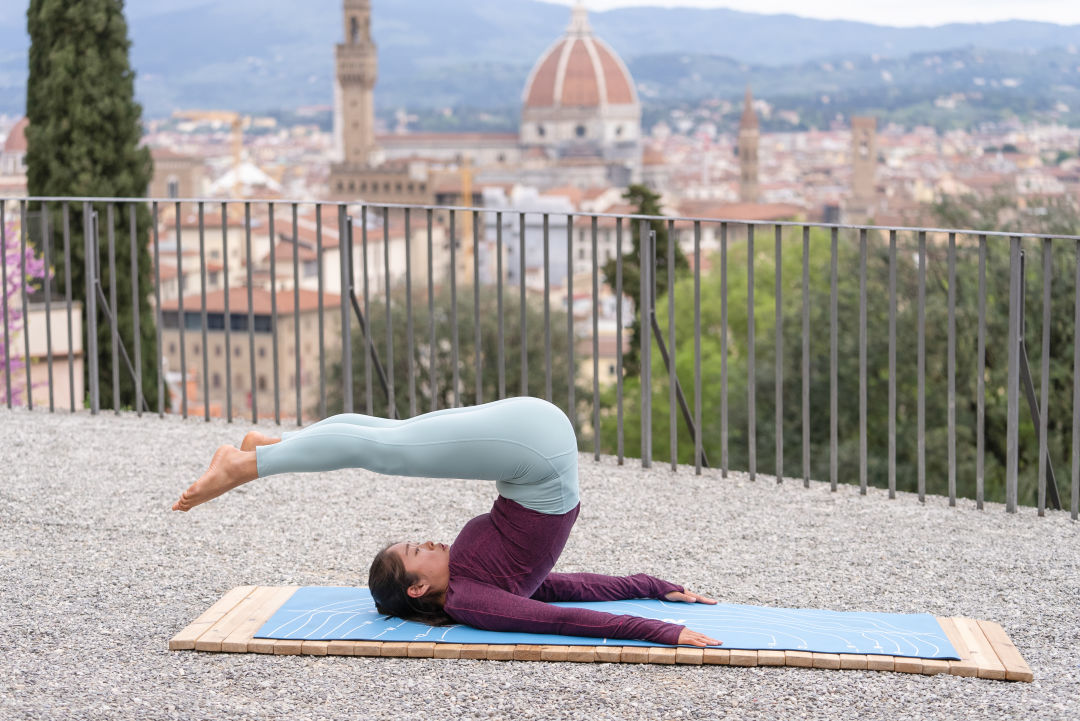
Explore Hydrow’s library of Pilates workouts from around the world.

